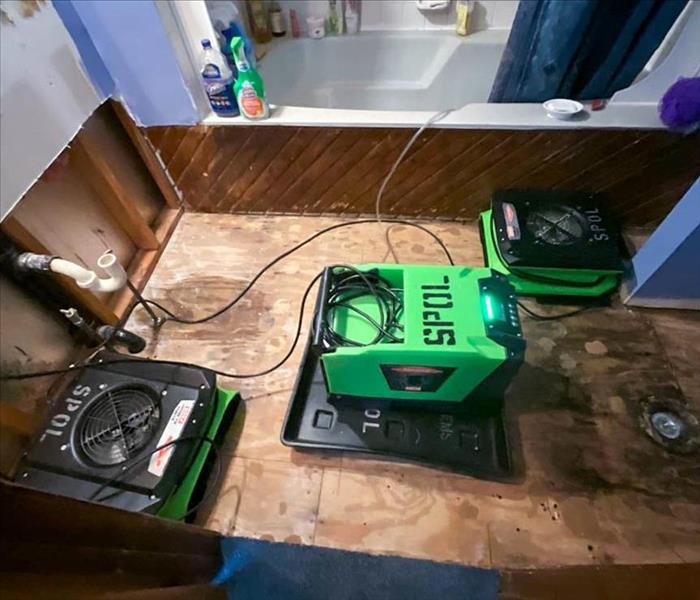4 Ways to Extract Water After A Water Loss
10/25/2023 (Permalink)
When disaster strikes and your home or business in the Kansas City area is flooded, a swift response is crucial to minimize damage and protect your property. One of the most critical steps in the water damage restoration process is choosing the right extraction method. In this blog, we'll explore the various extraction methods available for emergency water removal and help you make an informed decision to safeguard your property.
Assess the Situation
Before diving into the extraction methods, it's essential to assess the extent and severity of the water damage. The key factors to consider include:
The source of the water: Is it clean, gray, or black water?
The volume of water: How much water has flooded your property?
Affected areas: Which parts of your property are affected, including floors, walls, and ceilings?
Type of materials: Consider the materials involved, such as carpet, wood, or drywall.
Extraction Methods
1. Portable Extractors
Portable extractors are versatile and commonly used in water removal. They come in various sizes and are suitable for both residential and commercial settings. These machines use suction power to extract water from carpets, flooring, and upholstery. Portable extractors are effective for small to medium-sized water damage incidents.
2. Truck-Mounted Extractors
For larger water damage scenarios, especially in commercial properties or extensive flooding situations, truck-mounted extractors are the go-to option. These powerful machines have greater suction and water removal capabilities, making them ideal for substantial water removal tasks.
3. Submersible Pumps
In cases of deep water or severe flooding, submersible pumps are invaluable. These electric or gas-powered pumps can remove large volumes of water quickly. Submersible pumps can be used in basements, crawl spaces, and other hard-to-reach areas.
4. Wet/Dry Vacuums
Wet/dry vacuums are handy tools for smaller water damage incidents or isolated areas. They are user-friendly and effective for removing water from floors, carpets, and upholstery.
Professional Restoration Services
While some property owners may attempt DIY water extraction, it's essential to recognize the limitations of your equipment and expertise. In many cases, especially when dealing with contaminated water or extensive damage, it's best to call in professionals like SERVPRO® of Downtown Kansas City for expert assistance.
Choosing the right water extraction method in an emergency can be a challenging decision. The method you select should depend on the severity of the situation, the volume of water, and the specific needs of your property. Keep in mind that safety and thoroughness are paramount in any water damage restoration process. When in doubt, don't hesitate to contact a professional restoration service like SERVPRO® of Downtown Kansas City for immediate assistance.



 24/7 Emergency Service
24/7 Emergency Service
